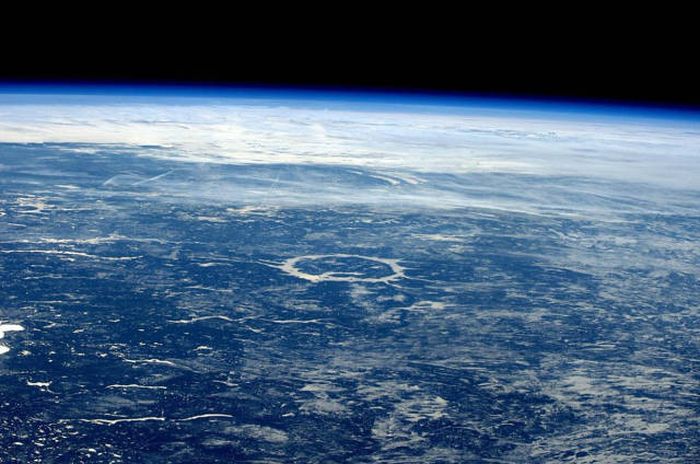|
|
Earth From Space
|
Further work on the physics of the vacuum was performed by Otto von Guericke. He correctly noted that the atmosphere of the Earth surrounds the planet like a shell, with the density gradually declining with altitude. He concluded that there must be a vacuum between the Earth and the Moon.
Early speculations as to the infinite dimension of space was performed in the sixteenth century by the Italian philosopher Giordano Bruno. He extended the Copernican heliocentric cosmology to the concept of an infinite universe that is filled with a substance he called aether, which did not cause resistance to the motions of heavenly bodies. English philosopher William Gilbert arrived at a similar conclusion, arguing that the stars are visible to us only because they are surrounded by a thin aether or a void. This concept of an aether originated with ancient Greek philosophers, including Aristotle, who conceived of it as the medium through which the heavenly bodies moved.
The concept of a universe filled with a luminiferous aether remained in vogue among some scientists up until the twentieth century. This form of aether was viewed as the medium through which light could propagate. In 1887, the Michelson-Morley experiment was carried out as an attempt to detect the Earth's motion through this medium by looking for changes in the speed of light based on the direction of the planet's motion. However, the null result indicated something was wrong with the concept. Since then the idea of the luminiferous aether had essentially been abandoned, to be replaced by Albert Einstein's theory of special relativity. The latter held that the speed of light is a constant in a vacuum, regardless of the observer's motion or frame of reference.
The first professional astronomer to support the concept of an infinite universe was the Englishman Thomas Digges in 1576. However, the true scale of the universe remained unknown until the first successful measurement of the distance to a nearby star was performed in 1838 by the German astronomer Friedrich Bessel. He showed that the star 61 Cygni had a parallax of just 0.31 arcseconds (compared to the modern value of 0.287″). This corresponded to a distance of over 10 light years. The distance scale to the Andromeda galaxy was determined in 1923 by American astronomer Edwin Hubble when he measured the brightness of cepheid variables within that galaxy. This established that the Andromeda galaxy, and by extension all galaxies, lay well outside the Milky Way.
|
|









